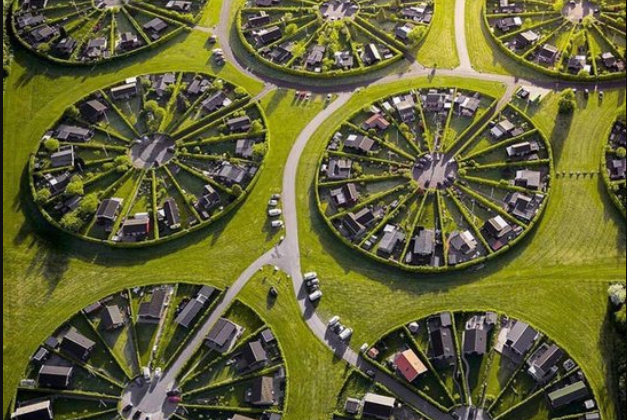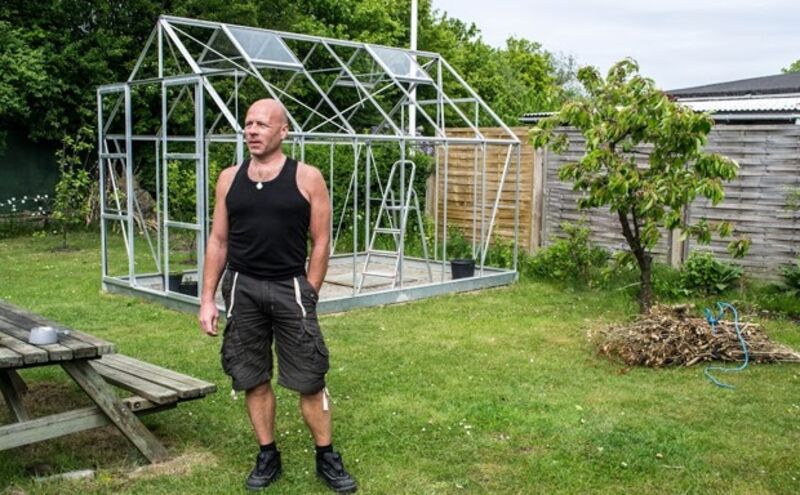
High rents are driving some Danes to not-quite-legal cabins and cottages.

ByLynsey Grosfield
July 12, 2016 at 6:57 PM GMT+3
For several years now, David Skat Nielsen has been cultivating a 7,400-square-foot patch of land on the island of Amager, in the greater Copenhagen area. Here, he pays 900 DKK ($133 USD) per month to get away from the stresses of apartment living, plant some fruit trees, build a greenhouse, and generally bask in the stillness of a hedged-in green space. Due to zoning restrictions, he can only live on the property for six months of the year, but he’s part of a growing group of Danes that would like to make these minimalistic garden lots into full-time homes.
Danish kolonihaver, or “colony gardens,” like Nielsen’s are communal groupings of leisure lots—each complete with a little cabin—that are peppered around the urban and periurban corners of the country. They’re similar to allotment gardens, multi-year land rentals in a dedicated area, leased for the express purpose of gardening. Whereas community gardens often traffic in raised beds full of annuals, colony gardens are spaces in which fruit trees, perennials, and hard landscaping installations are more the norm.
The land of a colony garden is almost always leased from the municipality or garden association, but the building standing on the land—such as a cabin or shed—is purchased by the tenant. When he purchased it five years ago, Nielsen’s dwelling cost around 200,000 DKK (around $30,000 USD).

Lynsey Grosfield
Officially, colony gardens have existed in Denmark since 1778, but grew in popularity in the late 1800s, as industrialization and a mass-migration of workers from rural areas to crowded cities made a little bit of soil a precious commodity. At the turn of the century, these garden spaces amounted to an urban planning innovation that was meant to curb any red-leaning sentiments, discourage idleness, strengthen family life, and keep the working class off the bottle. Popularity surged during and after World War II, when they functioned much like victory gardens in other parts of the world. Nielsen’s community of allotments was established in 1943.
In recent years, however, these patches of green have sometimes become off-the-books permanent residences. In the wake of the financial crisis, many colony gardeners on modest lots opted to rent out their permanent residences and live illegally in their garden cabins to weather the ups and downs of the tempestuous economy. (The buildings are often already equipped with electricity, and some, like Nielsen’s cabin, are located in prime transit-connected locations.) Much like the tiny house movement in North America, this kind of spartan living has as much to do with economics as it does with a desire to declutter.

Lynsey Grosfield
Nielsen pays 6000 DKK (around $900 USD) a month to rent a modest apartment in the city. But for many, regular housing is hard to come by in the capital: 1,000 people move to Copenhagen every month, and waiting lists for apartments are at an all-time high. Colony gardens are in high demand, too: buying a cabin and leasing the land it sits on means joining a waiting list. Depending on where the lot is located, the wait for a vacancy may be anything from a few months to a few years.
Many of the buildings on colony garden lots have become more “private dwelling” than “tool storage space.” A recent EU directive has dictated that by 2024, these buildings must be outfitted with indoor plumbing to bring them up to European building codes for summerhouses. Until recently, all on-site plumbing was communal, to make it more difficult to illegally take up permanent residence. Still, the cabins are mostly not up to snuff in terms of passing building and fire codes for permanent dwellings in Denmark. Even so, Denmark’s BT newspaper reported that the most expensive dwelling in a colony garden on record—a 60-sqaure-meter affair on land just outside of Copenhagen—just netted a cool 4.25 million DKK (roughly $630,000 USD).
Nielsen intimates that if he could legally live full-time at his colony garden lot, he’d give up his city apartment in a heartbeat. “It’s expensive to keep up two residences, but it’s what is necessary just to have a bit of green space,” he says.
With urban sprawl and congestion eating up square footage in and around cities like Copenhagen, the future of colony garden spaces is uncertain. While fixtures like plumbing certainly give them a greater sense of permanency, there is always the possibility that the land could be handed over to developers if the price is right. For half-year residents like Nielsen, a zoning shift could make these Walden-esque oases within city limits a permanent home, instead of a part-time retreat.

This is the beginning of saving our environment, creating community creativity. and sell esteem. Most of all a good start for the new generation our children!